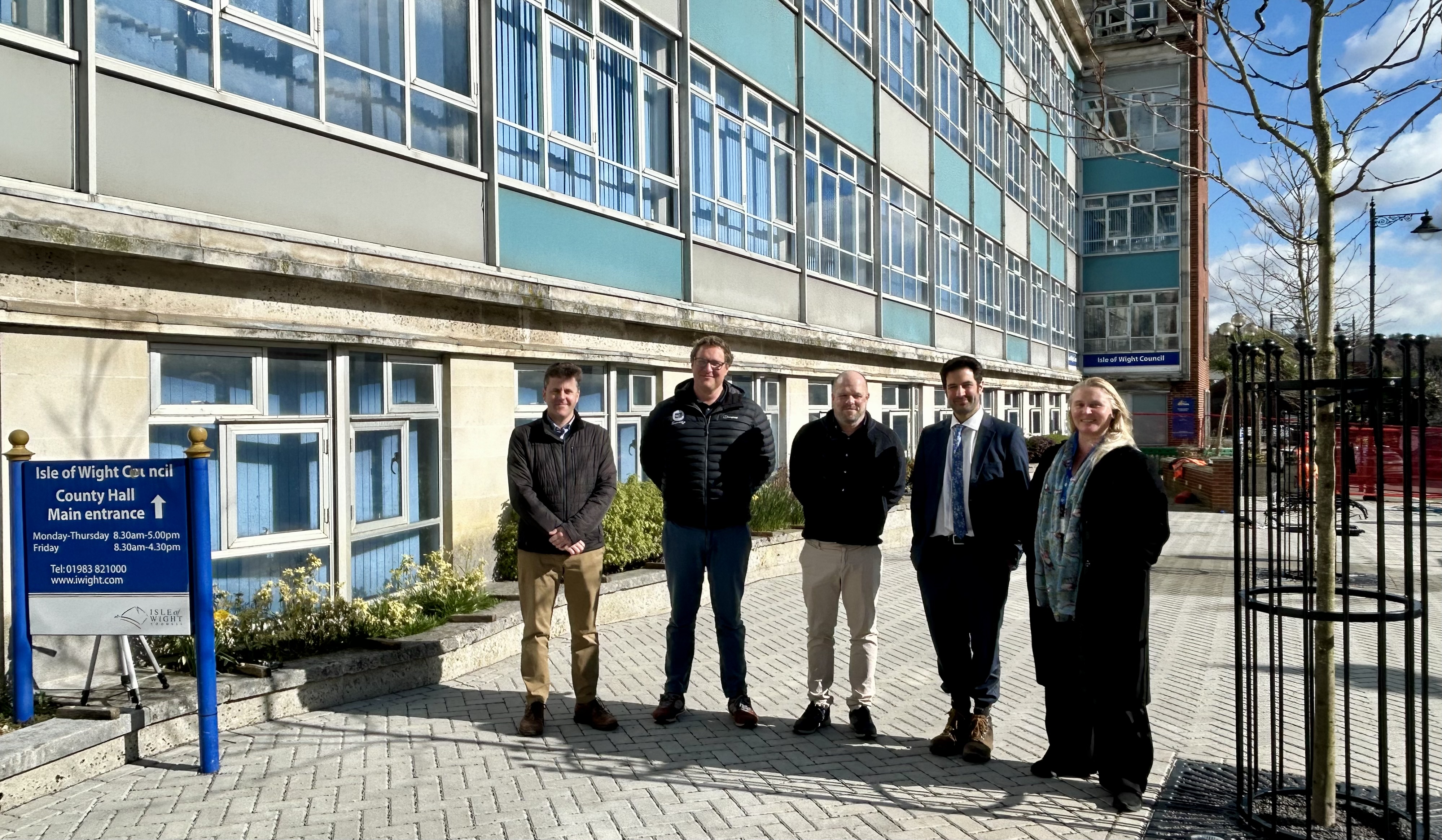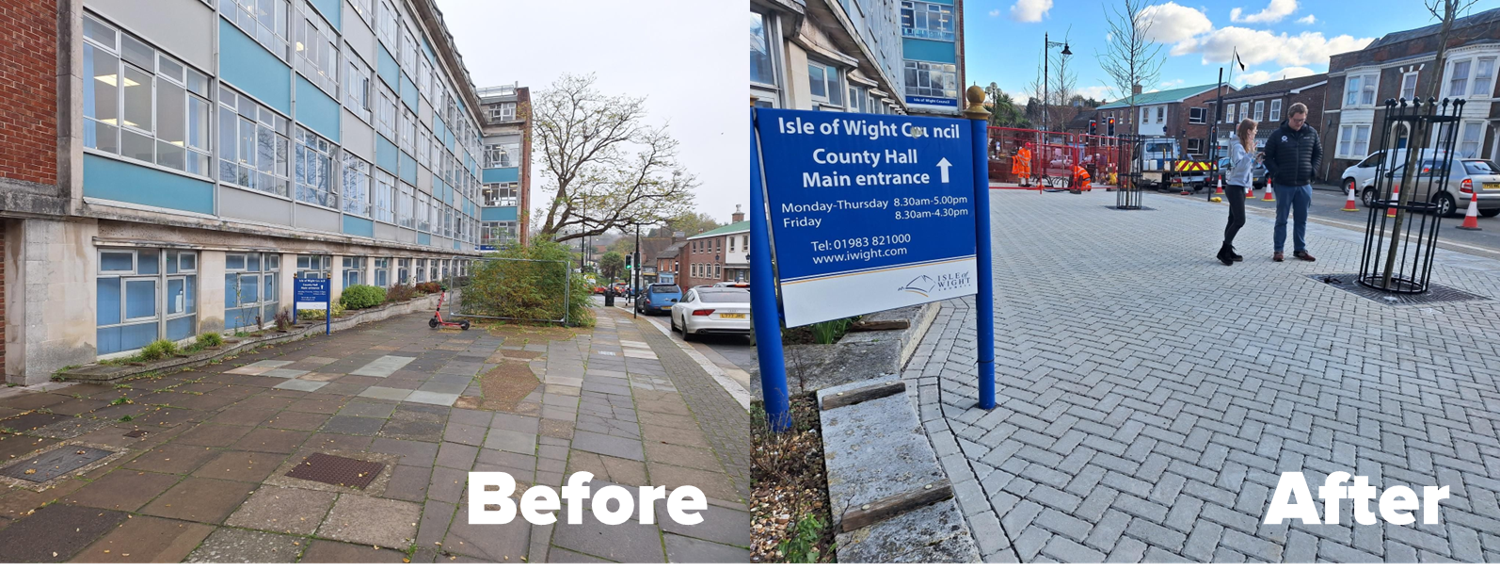
Regreening Newport: County Hall sustainable drainage
In partnership with the Isle of Wight Council, we've revamped the area outside Newport County Hall with permeable paving and tree pits to reduce flooding and pollution, and improve the appearance of Newport Town.
Transforming Isle of Wight roads
We're working with the Isle of Wight Council to add a roadside sustainable drainage systems outside Newport County Hall. This project follows the signing of an agreement by us and the Isle of Wight Council to sustainably transform roads across the island in an effort to cut storm overflows and flood risks.

The problem at County Hall
Newport County Hall was surrounded by concrete (impermeable) paving that allows rainwater to run straight off and into the sewer system, contributing to flooding and storm overflows during heavy rain. Although trees had been planted to absorb excess water, it wasn't enough to manage the huge amounts of rainwater we often receive.
Additionally, the tree roots had started to lift the paving tiles causing a hazard to the public. We set out to revamp the area outside County Hall to improve drainage, reduce pollution and flooding, and improve the appearance of Newport Town.
Tree pits and new paving
The County Hall project involved replacing 252m² of impermeable concrete with permeable paving, and installing four tree pits. The tree pits include root containment channels to stop the roots from disrupting the paving again, and an irrigation system so the trees can be easily watered during the drier months to keep them healthy and resilient to the weather.

Reducing storm overflows and flooding risk
The storage underneath the permeable paving is capable of holding 28,000 litres of rainwater, which will be soaked up by the trees and naturally evaporated. This will help protect homes and businesses from flooding, and help reduce storm overflows. It does this by slowing down the flow of surface (rain) water which typically runs straight off roads and into the combined sewer network.
The installation of these sustainable drainage systems offer a sustainable, long-term and attractive solution to excess surface water in Newport. Now, this water helps the trees flourish instead of contributing to flooding and storm overflows. The tree pits will enhance local biodiversity and offer urban cooling properties, and in the spring they will bloom in a beautiful array of yellow and green, attracting vital pollinators.

Going green
The project cost a total of £233k as opposed to the millions that would need to be spent on a storm tank to manage this water at a local treatment works, and has many more added benefits. The cost was jointly funded by Southern Water and the Isle of Wight Council as part of our shared mission to protect and preserve the local environment.
Learn more about our investments to reduce storm overflows in our Clean Rivers and Seas Plan.
Harry Buckingham, SuDS Programme Lead (West) said: “We’re really pleased to be working in partnership with the Isle of Wight Council to manage impermeable area as part of our shared goal to create healthier rivers and seas. Our work on the Island has already saved over 300 storm overflow releases, and this will increase as we continue to install nature-based and engineering solution to manage excess surface water.
“Around 50% of flow in our sewer comes from roads, pavements and car parks, so it’s essential that we work with partners like Isle of Wight Council to manage local impermeable area. Our customers can expect to see greener and more attractive urban areas that also reduce flood risk as this work progresses.”
Natasha Dix, Service Director Waste, Environment and Planning added: ‘‘It has been a pleasure working alongside Southern Water on this project. The installation of the SuDS is not only elegant looking, it provides a long-term solution to surface water, reducing the flood risk at Coppins Bridge, the busiest junction on the Island.
Not only do the trees planted provide excellent drainage solutions they will also contribute to urban cooling and attract bees and other pollinators, enhancing our local biodiversity.’’
